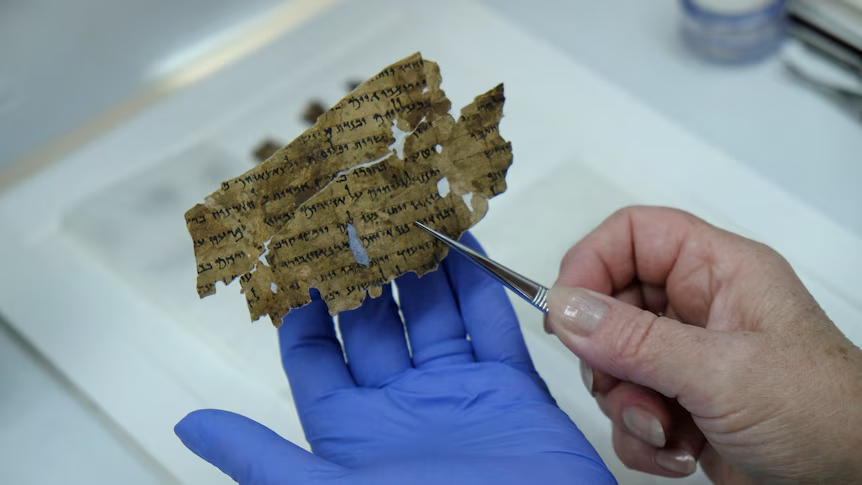A team of researchers has used artificial intelligence to show that many fragments of the Dead Sea Scrolls are decades older than scholars once thought. Their work could change our understanding of when key biblical texts first appeared and reshape the story of ancient Jewish life.
The study, published on Wednesday in the journal PLOS One, combined traditional radiocarbon dating with an AI tool named Enoch. The model learned to read handwriting styles by studying 24 scroll samples whose ages are already known. After that training, it examined 135 scroll fragments that had never been dated by carbon analysis.
Lead researcher Mladen Popović, director of the Qumran Institute at the University of Groningen, said the team wanted a more direct way to link ancient authors and their surviving texts. He noted that past methods relied mostly on expert judgment of handwriting, which can leave room for doubt. “With Enoch we can add solid data to our view of the past,” he said, comparing the system to a time machine that speaks to the hands that wrote the Bible.
When experts checked the AI’s predictions against known samples, they found the dates realistic about eight times out of ten. More striking, the model often placed the scrolls in earlier eras than paleographers had. Fragments once thought to come from around 50 BCE now have new dates near 150 BCE. Two important texts—bits of Daniel and Ecclesiastes—moved back to the 160s BCE, giving fresh support to the idea that those books were in use soon after writers first assembled them.
By fixing the scrolls in tighter time frames, the work fills a gap in the record between the fourth century BCE and the first century CE. Before this study, scholars had no firm way to date most manuscripts from that span. The lack of other dated writings made it hard to compare styles and pin down ages. AI now offers a uniform approach that can bridge that divide.
The new timeline may force historians to revise how they see the region’s political and cultural shifts. If some scrolls predate the Hasmonean rise in Judaea by decades, that could mean religious groups formed and shared ideas earlier than thought. It might also affect how we understand the development of biblical law and belief during the rule of the Seleucids and the rise of Rome.
Not all experts agree on using AI for this task. Some worry that the model will overreach if it sees patterns that paleographers miss. They argue that AI should not replace careful human study. Others welcome the fresh data as a way to test long–held assumptions and spark new debate.
Popović recognizes the need for continued review. He plans to expand the AI’s training to cover more scripts and languages. He hopes to work with international teams to test Enoch on other collections of ancient texts. “This is only the start,” he said. “We want to build a tool that can guide us in studying lives stretched across millennia.”
The study marks a turning point in the field of manuscript analysis. By blending old and new methods, it shows how technology can help unlock the past. As researchers explore further, the true age of these priceless scrolls may come into even sharper focus—and with that clarity, our view of early Jewish history may shift far more than we ever expected.

